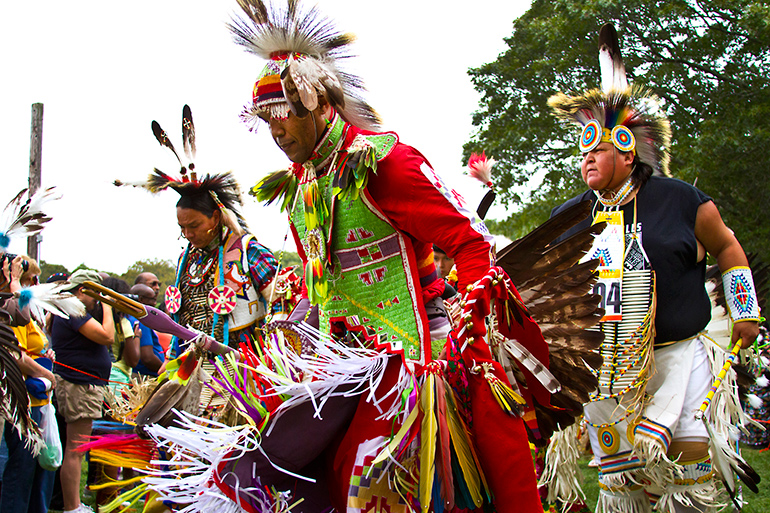Conscience Point: Shinnecock Documentary Will Be Shown on PBS

A documentary film about the Shinnecock Indian Nation, five years in the making and first shown at the Hamptons International Film Festival last month, will air on PBS (locally channel 13) on Monday, November 18 at 10:30 p.m. After that it can be seen as a stream at pbs.org or on the PBS Video App.
The movie is entitled Conscience Point, because it was at that place in 1640 at North Sea, Southampton that the settlers from England arrived on a sailboat from Massachusetts and met the friendly Shinnecock Indians who lived here. The Shinnecocks escorted the settlers to a safe place to build shelters for the upcoming winter, now called Old Town near Southampton Hospital. The Shinnecocks taught them their traditions and helped them to find their way in the New World.
By the time Treva Wurmfeld, a filmmaker from New York now living in Los Angeles, came to this area to make this film about the Shinnecocks, much had changed. The settlers had taken over almost all of eastern Long Island from them, formed a new country and had reluctantly given to the tribe a piece of property to call their own on a lush peninsula jutting out into Shinnecock Bay. Here, in a land of just 1.3 square miles they call their own, they have lived since then. According to the 2010 census, the current population of this nation, separate from the United States, is 662.

Wurmfeld decided to tell the story of the Shinnecocks through the eyes of a longtime Shinnecock advocate, Rebecca Hill-Genia, who lives on the reservation and who Wurmfeld met in 2014. The film explores the complex relationships between this official Shinnecock Indian Nation and those who live around it.
From that first landing at Conscience Point in 1640 and through to about 1990, the Shinnecocks ran their tribal area privately, closed off from the rest of the community. Signs leading into the tribal grounds bore signs reading KEEP OUT. And they meant it. A council of three tribal chiefs ran things, but how they were selected was not known. If you went onto their land anyway, you’d be escorted back out. In 1976, there was an attempt at getting the tribe official federal tribal recognition, but it foundered. And that was as far as it got.
Then, around 1990, the tribe went through a complete political and cultural transformation. Some of it the community around them liked, some not. But no one could deny that the tribe was standing up for itself. They renewed their tribal recognition push, finally achieving it in October 2010. They went public with how their tribal leaders were elected by having it done by tribal vote. They gave female tribal members the vote. They advocated for permission to build a bingo hall on eastern Long Island and a full-fledged casino up the island in Patchogue or Nassau County. But that fell through.
I recall at one point Tribal Councilman Lance Gumbs stood in front of a bulldozer clearing land in Hampton Bays for the bingo hall project to try to prevent the Town from shutting down the effort. But that fell through. At another point, the Tribe filed a legal action against the Town, claiming the land surrounding the tribal grounds in Southampton was stolen from them, and they lost.

But then there have been successes. Financial help began to come in from the federal government. This past year, the Tribe erected an electric billboard and began to sell advertising on it. Now they are proposing to open a gas station where gas could be sold cheaper, because as a separate nation no federal or state taxes need to be paid. They are also now working with the Town of Southampton to provide guidelines involving Indian burial sites where developers might come upon human remains. And in a most recent development, the Tribe worked out problems concerning their children and their education at the local schools.
Regarding the burial site problem, Hill-Genia told Newsday, “We’re going to tell the whole world we’re upset, and hopefully, we can build an alliance of like-minded people who will help us stop this overdevelopment crisis and stop this desecration of our ancient burials.”
November is National American Indian Heritage Month. It’s a good time to premiere a film called Conscience Point.



